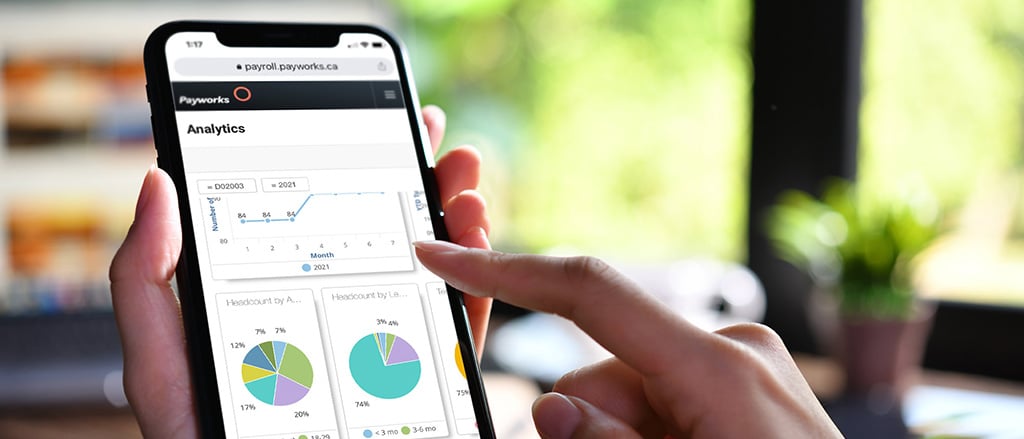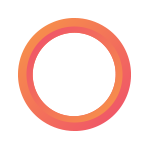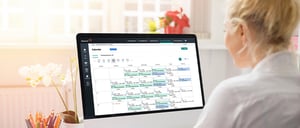
Answer those catch-all “Ask HR” questions easily & get strategic with Analytics
Today’s Human Resources professionals are tasked with keeping a pulse on the health and wellness of their organization, which can be achieved by exploring the nitty-gritty details of employment data and headcount demographics to help make decisive and strategic business decisions. Through that process, it’s also possible to identify potential (or imminent) issues sooner so that you and your leadership team can course-correct as required.
Sounds overwhelming? It doesn’t have to be. You don’t need a data science degree to make well-informed strategic decisions about and for your people; you just need an efficient way to get a clear picture of what’s going on (which shouldn’t take days!). A powerful analytics platform can help you quickly answer those catch-all “ask HR” questions and elevate the conversation to a strategic level – plus, it can be surprisingly easy to master!
Let’s dive into how HR analytics (and you!) can get a speedy snapshot of headcount, turnover, and employee demographics, and convert that into business intelligence.
Where to start:
For those using Payworks’ suite of workforce management solutions, our Human Resources and Workforce Analytics platforms are especially powerful when coupled, helping you identify trends in employee headcount, hired count, and turnover. By using our HR solution to manage the employee lifecycle, the data seamlessly flows into Analytics, creating a clear view of trends across your business.
Analytics includes flexible dashboards, easy-to-use filters, and the option to save and reapply preferred views whenever needed. It’s never been so straightforward to view your workforce data – finally reducing (or maybe even eliminating!) paperwork, manual calculations, and multi-tab spreadsheets so you can better focus on your people. These accelerated insights and presentation-ready graphs and tables mean you can gather and share findings with colleagues and stakeholders in seconds.
Our top three reasons to dig into your HR data:
Whether you want to zero in on less run-of-the-mill situations or capture a holistic view of trends year-over-year, here’s how to uncover those insights to make informed decisions:
1. Get the quick answers you’re looking for about headcount
Is “what’s our headcount at?” one of your most commonly heard questions? You can answer that using Analytics. The dashboards within which you can look at this type of data for your organization have multiple graph views and filtering capabilities to look at a desired subset of the data. Filters empower you with the capability to define which employee statuses (for example, inactive employees) should be included in your headcount. That’s right: you can view this data your way!
It’s also possible to look at precise totals by employment type, such as full-time, part-time, contract employees, or students. To better understand how your workforce is distributed, it’s common for headcount data to be used in comparing totals across departments, cost centres, or occupations. This can be leveraged for budgetary review and future planning. To identify trends in your headcount data, compare the month-over-month totals with the year-over-year data. These analytics can help equip you (and the business) in forecasting and planning based on those quickly-obtained insights.
Analytics can also be leveraged as you begin your strategic assessments. End-of-the-month headcount data provides instant intel for retrospective reporting, answering questions like, “what did January of last year look like compared to this year?” Depending on your preference, the answers are available in either graph or table format. Even with something as seemingly straightforward as headcount data, it’s possible for HR professionals to uncover anomalies – or access data to verify those areas about which you’ve always had a hunch. Any misalignments will surface, and you’ll have the data to support and take action where needed.
2. Identify trends in turnover sooner
Considering that an organization’s biggest investment is their people, with the average cost per hire coming in at nearly $4,700, understanding your turnover data means you can uncover essential insights on staff retention (or lack thereof). In Analytics, turnover data can be analyzed across cost centres, departments, or occupations, illuminating which departments (if any) are experiencing lower or higher rates of turnover. This information can be cross-referenced with the qualitative or more confidential data already being collected and reported as part of your standard HR practices, and can better inform decisions like launching employee engagement surveys, ramping up exit interview processes, or even further examining elements of the business’ payroll and compensation packages.
With Analytics, the answer to “what’s our turnover percentage?” is calculated for you and waiting there upon logging in – yes, it really is that simple! This year-to-date percentage can be useful in creating a baseline, and the end-of-year turnover prediction percentage (if current trends continue) can be extremely informative. This type of data of emerging patterns can be particularly powerful to not only course-correct if needed, but to take action sooner than you might’ve done otherwise.
3. Explore headcount and turnover in detail with employee demographics
When examining current headcount, you can obtain additional insights through employee demographics such as age group, gender, and length of service. You can look at the percentage of employees who are new to the organization compared to those that are experienced, and then compare the breakdown across departments or occupations. This can guide strategic conversations around talent acquisition, recruitment, and onboarding processes, from identifying new avenues for promoting career opportunities to modifying interview questions in the hiring process.
Another way HR professionals can get strategic with this data is to look at demographics across their organization, and then consider adjusting policies and benefit packages to be more inclusive. The data can also help organizations better plan and anticipate the possibility of backfilling pending retirements. As an example, say you’ve identified that there are 28 potential retirements over the next five years. In Analytics, it’s possible to switch views to determine the occupations, departments, and cost centres that will be impacted. From there, you can consider options to prepare yourself and your teams, ranging from professional development, training, and mentorship opportunities for existing staff, to understanding the longevity of hiring workflows for more competitive roles and locations.
It’s also possible to look at employee demographics within your organization’s turnover data. By viewing this information through length of service, as an example, HR professionals can identify patterns if they surface and be better equipped to take meaningful action to address and reduce those turnover percentages. For instance, if a trend emerges with turnover data among tenured team members, then having conversations around professional development opportunities like mentorship, managerial training, or even wage and benefit reviews might be considered. Or if a trend is identified in turnover among employees under one year of service, it might be worth it to compare compensation and benefit packages against industry standards or reevaluate your skills profiling.
These are just a few ways to gain essential insights into your HR data using the flexibility of Analytics. The answers to these questions (and more!) are at your fingertips – let us help you uncover them. To learn more about how Analytics can help empower HR professionals, sign up for our interactive webinar with Payworks’ HR & Analytics Specialist, Cindy Tarasow: https://payworks.zoom.us/webinar/register/WN_74j-Bv9ATCSeoKcS5zenHw#/registration.
These articles are produced by Payworks as an information service. They are not intended to substitute professional legal, regulatory, tax, or financial advice. Readers must rely on their own advisors, as applicable, for such advice.














